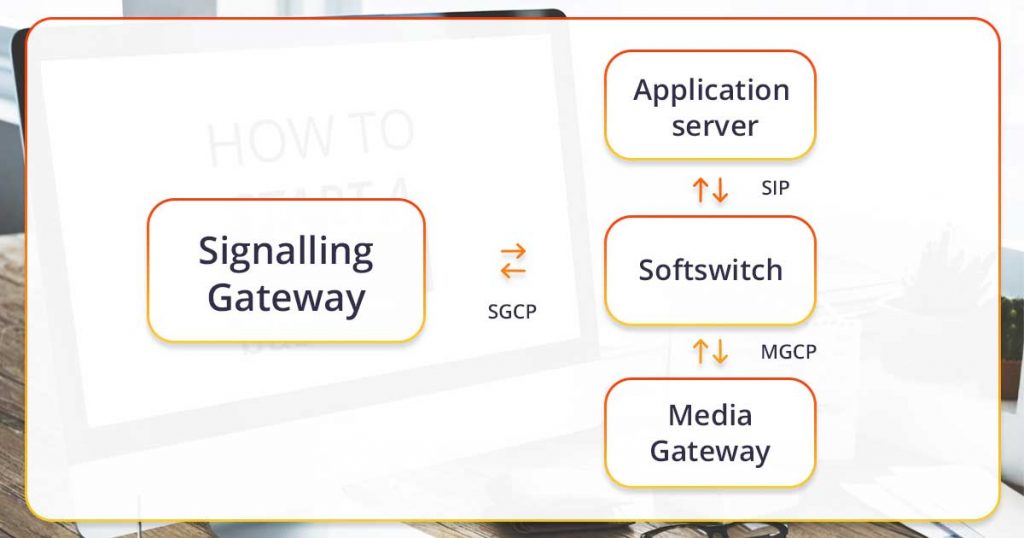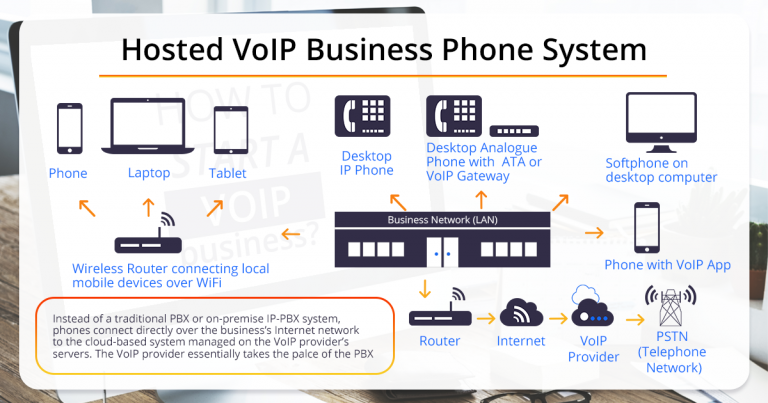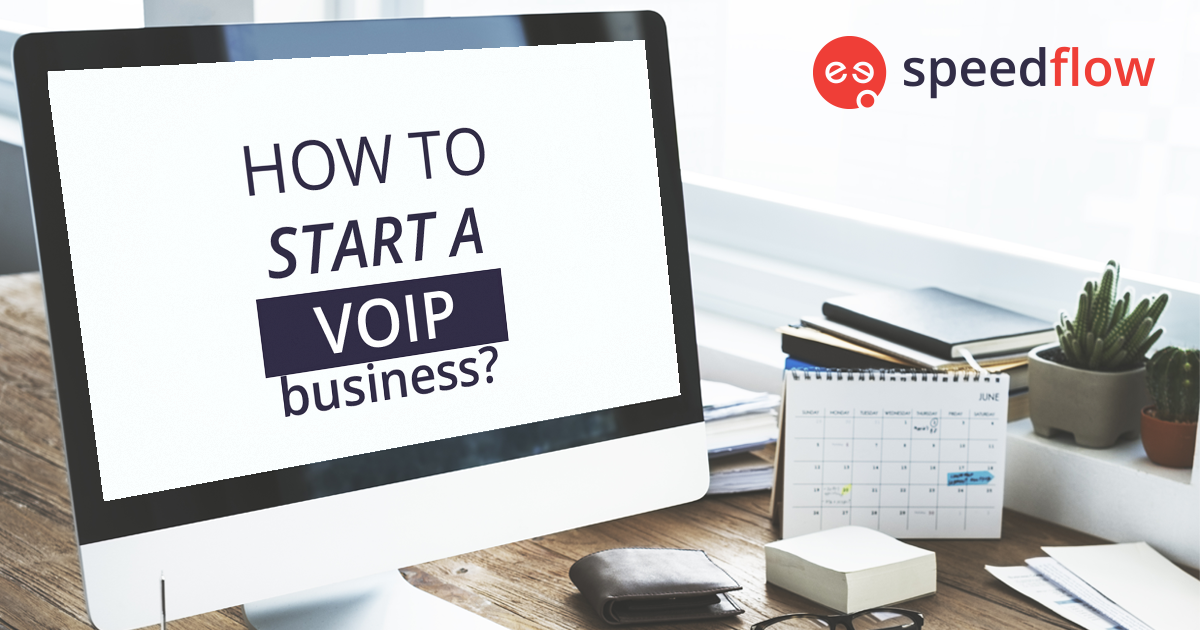Voice over Internet Protocol (VoIP) technology is not just a buzzword, it’s a transformative force in the world of communication. As businesses and consumers increasingly rely on digital solutions, launching a VoIP enterprise presents an exciting opportunity. If you’re considering diving into this promising field, let’s guide you through the process of how to start a VoIP business.
What is a VoIP Wholesale Business?
Wholesale voice termination is a common business strategy that relies on the VoIP technology. It includes combining traffic and letting VoIP providers work together. It acts as a “go-between” for two different carriers. Wholesale VoIP termination usually doesn’t require a big investment upfront, but still the potential profits could be substantial. In light of this, every part of the business needs to be looked at carefully.
Conducting a Thorough Market Research
Before diving into any business venture, doing in-depth market research is an absolute necessity. Delve into the current demand for VoIP services in your chosen target region or demographic. Alongside this, investigate existing VoIP providers. What are their strengths? Where do they fall short? Can you identify gaps in the market or untapped niches that can be your entry point? The insights gleaned will be the bedrock of your strategies.
Drafting a Robust Business Plan
A business plan isn’t just a formality, it’s your vision and strategy on paper. Within this plan, articulate your business’s mission and what you aim to achieve in the short and long term. Come up with an operational strategy on how to start your VoIP business, including technical infrastructure, staffing requirements, as well as potential partnerships.
What kind of customer support do you envision – voice, chat, email or maybe on-site? Financial projections, including capital requirements, expected revenue, and profit margins, are also essential components. Moreover, decide on your marketing, sales and pricing tactics early on and create an exit plan. You can outline under what circumstances you might sell your business.
Navigating the Maze of Licensing and Regulations
It won’t come as a surprise that all businesses fall under some sort of restrictions or regulations. Every industry has its legal intricacies, and starting a VoIP business is no exception. You’ll need to secure the necessary licenses to operate, and this process can be time-consuming and complex. It’s not just about local regulations, if you expand internationally understanding global telecom regulations becomes essential. Furthermore, with VoIP’s digital nature, you should be well-acquainted with data protection and privacy regulations.
Key Components for Starting a VoIP Business
Now that you have put some thought into your business plan, market research and the legal aspects of starting a VoIP business, let’s take a closer look at what hardware and software infrastructure you need as well as the main market players – suppliers and clients:
- Class 4 Softswitch – a fundamental component of the wholesale VoIP provider’s infrastructure
- Hardware equipment – optional; you can use SaaS or hosted Softswitch instead
- VoIP suppliers – other VoIP companies that will offer you VoIP routes
- Clients – they provide you with VoIP traffic, which you will send to your suppliers
How to Choose a VoIP Softswitch?
The Softswitch is essential for routing traffic, but it is not always a clear-cut choice of which solution to purchase. To benefit the most, we suggest you trust a carrier-grade platform and make sure you have a solid internet connection in place.
Evidently, Class 4 Softswitches are available in a variety of configurations and their functionality varies, depending on the vendor. Some of the most frequent and essential features include scalability, licensing options, a revenue assurance mechanism, and a billing system. If you’re looking for the top Class 4 Softswitch pay attention to revenue assurance, routing, reports, data visualization options and a mobile app option.
You shouldn’t underestimate the scalability element of the Softswitch since as your company grows your business needs change. Scalability is the ability of the software to handle several calls simultaneously and the overall number of calls per second. This is crucial to verify since it will determine how you will manage wholesale call volume.
Purchasing a separate billing system when you are just starting your VoIP business would be an added hassle for you since you have to worry about integration. That’s why you should select a system that includes a billing module to save money in the long run.
Network security is a critical component of a successful telecom business in today’s day and age. Network downtime or security breach will have a negative financial impact, resulting in losing customers and potential lawsuits. So, it is important to have a system with automatic fraud detection and notification capabilities. Below you will find a chart illustrating how a Softswitch works:

Equipment Needed for VoIP on a Large Scale
The on-premises model in which companies set up a VoIP hardware and software infrastructure on their own is gradually becoming a thing of the past. In fact, most businesses want to reduce CapEx by using hosted or cloud-based software. Implementing cloud, SaaS, and hosted models allow for the reduction of maintenance costs and fees. More often than not, the vendor is the one to take care of all software and hardware issues, saving you money, which would otherwise come out of your pocket if you ran a dedicated in-house technical team. As a result, you will have more leeway to focus on growing your business and making sound financial investments. Besides, scalability is fast and easy – you can increase or decrease the number of user licenses based on the traffic you are getting. As a rule of thumb, one server is enough for a small amount of traffic, but we recommend using two servers for better stability and the ability for future growth.
A billing server for processing financial data is a good place to start, followed by one that combines RTP traffic streaming with RADIUS for centralized authentication, authorization, and accounting management for computers that connect to and use a network service. If the amount of traffic is high enough, RTP and RADIUS can be split between two servers. However, if you use a cloud-based or a hosted Softswitch, you can use almost any PC or laptop to access the web interface.
You can see what a hosted softswitch system looks like here:

Finding Suppliers and Clients
Suppliers
There are two primary stakeholders in VoIP wholesale transactions: suppliers and customers. Traffic is routed to VoIP providers via routes purchased from vendors. The provider then offers his clients VoIP traffic, which is sold at a margin. In essence, a given VoIP company can be both your client and your supplier at the same time.
Take a look at some points on how to start your VoIP business, especially when it comes to working with vendors:
- What is their maximum carrying capacity?
- How long has the company been in operation?
- Can they provide testimonials?
- How many service providers are maintained in their routing groups?
- How often do 503 errors (service unavailable) occur?
Once you get the answers to these questions, you will have a solid understanding of what type of traffic and quality of service you can expect. Then, you can proceed with signing a contractual agreement with your supplier and ask a lawyer to review it.
Clients
Now that finding a supplier is out of the way, the next step is to look for potential customers for your VoIP solutions. You can start by signing one customer first and making sure that their VoIP needs are fully met. Then, you can go ahead and onboard another customer, then another one and so on until your whole network is set up in place.
A quick tip on how to start your VoIP business: don’t rush to take on too many clients at once or the process of managing them could become overwhelming and lead to mistakes. It’s best to slowly but steadily grow your brand.
If you have done some marketing in the past, you are already aware that using the right channel for finding clients can make or break your business. VoIP forums and chat rooms are a great place to start if you are on a tight budget and you cannot afford to invest a lot of money in digital advertising. You can approach them by creating awareness about your product and giving them free trials, showcasing the features your routes have. You can also generate leads by visiting telecom conferences but note that attending those is going to cost you some money. That’s why it is worth the time and effort to do some research and to pick the events that are most likely to bring you new customers.
VoIP Traffic Quality
The term “VoIP traffic” refers to the delivery of data via the Internet. Traffic, like any other commodity, has special characteristics that affect its demand and respective cost. A VoIP call is of high quality if both parties are able to hear each other well and there is no distracting background noise or echoing.
In the wholesale VoIP industry, traffic quality is estimated using a number of metrics. Average call duration (ACD), answer seizure rate (ASR), and percentage of dropped calls (PDD) are probably the most popular metrics. Bear in mind that the higher the quality of the service, the higher the price.
Risks of Running a VoIP Business
The VoIP market has its own unique risks and dangers you could fall victim to.
However, the most common threat sounds trivial – not receiving regular payments from your clients might happen more often than you expect. It usually occurs when a wholesale provider sells traffic using a postpaid payment option.
Thankfully, there are certain steps you can take to mitigate the risk of not getting paid. First, always try to collaborate with reputable and established companies which have a positive image in the industry. Run a background check on your potential business partners to see if they ever engaged in VoIP fraud. Anti-fraud forums are credible sources of information as well as websites of local authorities, listing registration details of organizations.
When signing the contract, pay attention to clauses that outline the payment type (prepaid or postpaid), billing terms (per second/per minute), bank details, confidentiality, etc. Be aware of the widespread use of FAS (False Answer Supervision) provision. It entails improper call augmentation billing because certain calls are invoiced even if they are not connected to the customer. You should avoid working with businesses that have an excessive amount of FAS. Even though your suppliers will charge you for these calls in their invoices, there is a chance that your customers won’t pay for them. Although you can’t completely eliminate the hazards associated with doing business, following our recommendations can help you reduce them.
Financial Tips on How to Start Your VoIP Business
It is about time we get to the gist of it, the reason you started your VoIP business – how to make money.
As we’ve seen, the most important part of VoIP wholesale is moving VoIP traffic from one carrier to another (from the origination side to the termination side). You make a profit by pocketing the difference between what you buy and what you sell it for.
For example, let’s say you already found some suppliers and clients. Two of your providers offer rates of 10 and 10.5 cents per minute for voice termination to a specific country. Let’s assume your customer is willing to pay 11 cents per minute. Apparently, you want to get cheaper traffic since your margin is bigger.
But imagine you have tens or hundreds of customers and suppliers – you cannot do the math manually on your own. That’s why you need a Softswitch with the Least Cost Routing feature, which automatically chooses the most profitable source of traffic. But as we discussed above, the price of the route is not the only factor that matters, since the quality of the route has to be taken into consideration as well before the system makes a decision. After all, your customers won’t work with you in the long run if your traffic is of low quality.
Our MediaCore platform takes into account all the key VoIP parameters we discussed above, such as the percentage of dropped calls, average call duration, etc. to evaluate the quality of traffic and to pick the best route available. In other words, our system can block routes with low-quality parameters, automatically favoring the high-quality routes.
Partner up with Speedflow
In conclusion, we’d like to point out that you don’t need to make a large upfront investment to start a VoIP wholesale business. With monthly payments, you can acquire a hosted MediaCore Softswitch and Speedflow will give you a full VoIP wholesale platform setup on our infrastructure. Our system functions independently and it doesn’t need any third-party solutions. Get in touch with our software team and we will guide you how to start your VoIP business today. Send us an email to info@speedflow.com.




